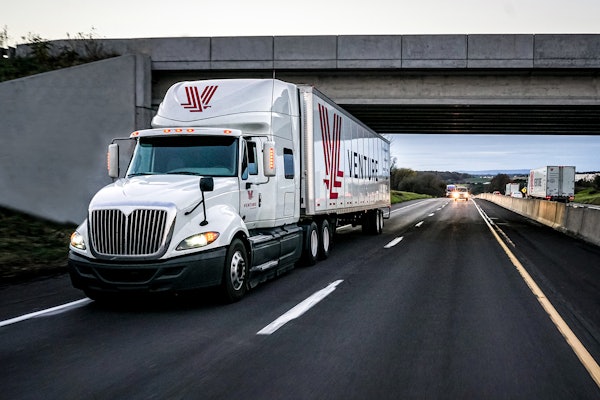The Bekins Co.’s HomeDirectUSA tackles just-in-time delivery to homes.
For the past 113 years, The Bekins Co. has adapted to technological revolutions, starting with the switch from horses to the internal combustion engine.
Ownership, too, has changed over the years, most recently almost three years ago when GeoLogistics Corp. sold the company to the Bekins agent network under a structure that gives every shareholder agency equal voting rights. In part because of that buyout, the Midwest chapter of the Turnaround Management Association selected Bekins as its Turnaround Company of the Year in 2002.
Today, the Hillside, Ill.-based Bekins operates specialized divisions that move household goods, provide trade show services and handle logistics for high-value computer, telecommunications and office imaging equipment. One of Bekins’ more recent initiatives is HomeDirectUSA.
In the late 1990s, the growth of Internet-based retailers created a demand for distribution of goods from manufacturers and warehouses directly to businesses and consumers. Small parcel carriers UPS and FedEx quickly gained the bulk of this market for small packages, but the freight demand also included large consumables and durables.
Bekins saw an opportunity in the business-to-consumer (B2C) market for products such as appliances, furniture and other larger goods. So in 1999, it established the HomeDirectUSA brand to provide logistics and fulfillment for Internet-based and “brick-and-mortar” retailers that offer direct-to-home delivery. Today, HomeDirectUSA is growing at about 30 percent a year with current revenues of more than $100 million, says Randy Valentino, vice president and chief technology officer of Bekins.
But for Bekins and other companies that serve the B2C transportation market, the final stage of transportation – known as last-mile delivery – has always been a major challenge.
While a warehouse or a business might be open throughout the workday, most homeowners aren’t at home then. Typically, a retail store or Internet-based shipper can offer the buyer of a large item, such as a refrigerator, at best a specific date of delivery. On that date or perhaps the night before, a dispatcher calls with a delivery window – between 8 a.m. and 12 p.m., for example. A driver may – or may not – decide to pick up his cell phone to call the customer to give a more precise arrival time.
The management team at HomeDirectUSA decided that it doesn’t have to be this way. In July, the company implemented a project called the Service Tracking Automated and Routing System, or STARS, that will provide consignees upfront with a one-hour timeframe for delivery. In addition, the system soon will include an interactive voice response component to provide consignees with a precise time of arrival within the one-hour timeframe, Valentino says.
“[STARS] is greatly improving our ability to service the customer,” Valentino says. “With all the new technology, we can give customers a precise time the delivery truck will be there.”
The STARS project, built by Bekins’ IT group, uses a routing and scheduling optimization solution from InterGis called Visual Control Room that communicates through cellular and Wi-Fi networks to a field-force automation application from IBM Global Solutions running on Intermec 760 mobile computers. To date, STARS has been implemented at 15 locations, with plans to complete the rollout at all 63 locations by the second quarter of next year, Valentino says.
When a delivery agent for HomeDirectUSA is at a Bekins distribution center, he scans in the freight, and the mobile application instructs him how to sort and redistribute the items in the trailer according to the stop-offs. Once a driver completes his loading, the system creates a route manifest and launches a delivery application with detailed stop and routing information and driving directions.
When arriving at a stop, STARS prompts the driver on the unique service requirements for each delivery. Consignees that order Platinum service, for example, get inside placement of the freight in their room of choice with package removal and setup, Valentino says. Drivers also can enter over, short and damaged (OS&D) information for immediate processing and verify that consignees received exactly what they ordered.
The application captures proof-of-delivery on a real-time basis, which is helpful for retailers that execute their invoices upon receipt of POD. As deliveries are executed, the data is coming back to the carrier’s databases – as well as its customers’ systems – to update shipment-tracking applications.
Through interactive voice response technology, STARS automatically will call the next person on the route after drivers complete a previous stop. In other words, the consignee will get a computer voice telling him that the driver completed his last stop and will be there in 45 minutes, for example.
STARS feeds a shipment tracking and inventory management technology called Directware, which is accessible from HomeDirectUSA’s website. Retailers and other businesses can make this tool available to consumers for added piece of mind, Valentino says.
The greatest challenge of Internet-based B2C delivery hasn’t been lack of demand. Rather, customer service is holding the market back. By giving customers a precise arrival time – and meeting it – HomeDirectUSA hopes to expand its opportunities.
Innovators profiles carriers and fleets that have found innovative ways to overcome trucking’s challenges.
If you know a carrier that has displayed innovation, contact Avery Vise at [email protected] or (800) 633-5953.







